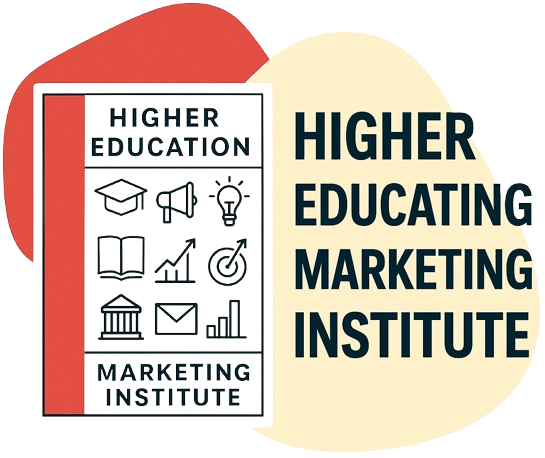
In the digital age, higher education institutions recognize the significance of Search Engine Optimization (SEO) in attracting organic traffic and improving their rankings on search engine results pages (SERPs). A striking statistic reveals that the top page in a Google search receives a whopping 25.6% click-through rate, underscoring the importance of ranking high.
Prospective high school students heavily rely on a college’s website as the most influential source of information. Therefore, conducting thorough keyword research to identify relevant keywords for the target audience is paramount for enhancing website rankings. Technical SEO components, including HTTPS, unique content, XML sitemaps, and mobile-friendliness, also contribute to better rankings.
Regularly creating and updating high-quality content not only satisfies prospective students but also boosts SEO. Testimonials and reviews from students can be optimized for SEO, adding value to the website. Backlinks from reputable sites indicate a website’s quality and authority. Tools like Google Analytics, Google Search Console, Semrush, and Ahrefs aid in measuring SEO effectiveness and content marketing strategy.
Additionally, site structure, navigation, internal linking, and URL length significantly impact SEO. As such, unlocking SEO success for higher education is an ongoing process that requires continuous attention and improvement. The Omni CMS Insights module serves as a valuable tool for monitoring various aspects of website health, including SEO.
Key Takeaways
- Conduct thorough keyword research to target and attract prospective high school students.
- Implement technical SEO components such as HTTPS, unique content, XML sitemaps, and mobile-friendliness to improve search engine rankings.
- Regularly create and update high-quality content to enhance SEO and provide relevant information to prospective students.
- Leverage testimonials and reviews from students to optimize the website for SEO and add credibility.
Key Factors

One of the key factors for achieving SEO success in higher education is the implementation of technical SEO components such as HTTPS, unique content, XML sitemap, and mobile-friendliness. These components can significantly improve website rankings and attract organic traffic.
HTTPS, or Hypertext Transfer Protocol Secure, ensures a secure and encrypted connection between the website and the user. This enhances user trust and improves search engine rankings.
Unique and valuable content plays a crucial role in SEO. It helps the website stand out from competitors and provides relevant information to the target audience.
An XML sitemap helps search engines crawl and index the website more effectively. This improves visibility in search results.
Additionally, optimizing websites for mobile devices is essential. This is because more users access the internet through their smartphones. Ensuring mobile-friendliness improves user experience and search engine rankings, contributing to overall SEO success in higher education.
Implementation Strategies
Implementing effective strategies is crucial for colleges and universities to enhance their online visibility and attract prospective students.
For example, a case study conducted at XYZ University demonstrated the positive impact of optimizing website content and incorporating relevant keywords, resulting in a significant increase in organic search traffic and improved rankings on search engine result pages.
In addition to keyword optimization, colleges, and universities should focus on technical SEO components such as ensuring the website is HTTPS secure, providing unique and high-quality content, creating XML sitemaps, and ensuring mobile-friendliness.
Regularly updating and creating high-quality content is also important to boost SEO and satisfy prospective students. Furthermore, leveraging testimonials and reviews from students can optimize the website for SEO.
Backlinks from high-quality sites indicate a good quality and high authority website, thus it is essential to build a strong backlink profile.
Monitoring and measuring SEO effectiveness can be done through tools like Google Analytics and Google Search Console, as well as utilizing SEO tools like Semrush and Ahrefs for content marketing strategy and competitor analysis.
Overall, the implementation of these strategies is necessary for colleges and universities to achieve SEO success and effectively attract prospective students.
Monitoring and Improvement

To ensure continuous progress in online visibility and attract prospective students, monitoring and improvement of website performance is imperative in the higher education sector.
Monitoring the website’s performance allows institutions to identify areas that need improvement and make necessary adjustments. This can be achieved through the use of tools such as Google Analytics and Google Search Console, which provide valuable insights into website traffic, user behavior, and keyword performance.
By regularly analyzing this data, educational institutions can identify trends, optimize content, and improve user experience to enhance their search engine rankings.
Additionally, monitoring backlinks and implementing a strong link-building strategy can further improve website authority and visibility.
Continuous monitoring and improvement of SEO efforts are essential for higher education institutions to remain competitive in attracting prospective students and maintaining a strong online presence.
Conclusion
In conclusion, implementing effective SEO strategies is crucial for higher education institutions to improve their rankings on search engine results pages (SERPs) and attract organic traffic.
By conducting keyword research, optimizing technical SEO components, creating high-quality content, and obtaining backlinks from reputable sites, colleges, and universities can enhance their online visibility and attract prospective students.
Monitoring and continuously improving SEO efforts using tools like Google Analytics and SEMrush is essential for long-term success.
As the saying goes, ‘Success is not final, failure is not fatal: It is the courage to continue that count.’




